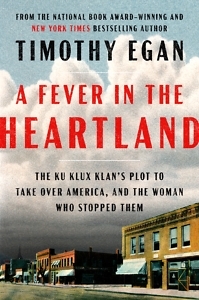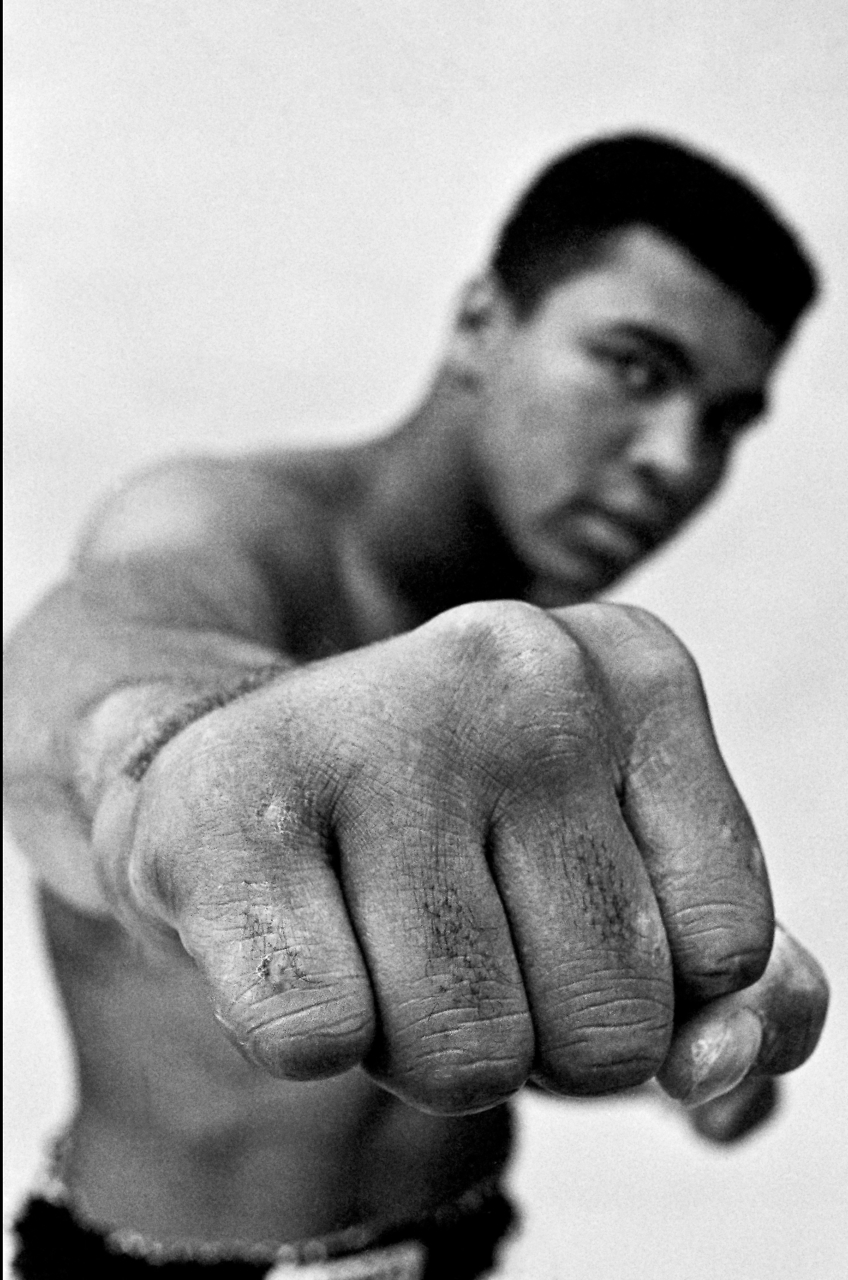Fascist Buffoons
Timothy Egan chronicles the rise and fall of the KKK in the 1920s
Mike Pence, former governor of Indiana and Donald Trump’s vice president, was often mocked during the 2016 presidential campaign for calling his wife “Mother”; but as Timothy Egan reveals in A Fever in the Heartland, another devout woman known as Mother captivated Hoosiers a century ago when a resurgent Ku Klux Klan enlisted her to recruit Protestant women recently given the right to vote.

.
Raised a Quaker, Daisy Douglas Barr experienced a vision in her youth and shifted to preaching. Her sermons packed auditoriums. But her work in the temperance movement “evolved into a broader vision of white supremacy maintained by the rising political strength of women.” As Egan opines, a “big heart that had once brimmed with benevolence for fallen humans had shriveled into a raisin of racial animus.” Barr joined forces with D.C. “Steve” Stephenson, Indiana’s Grand Dragon, who named her Imperial Empress of the Women of the Ku Klux Klan.
Barr is but one of a colorful if sinister supporting cast in A Fever in the Heartland. The main attraction is Stephenson. Imagine a blend of Bull Connor’s racism, the political skills of Robert Moses, P.T. Barnum’s hucksterism, and the sexual sadism of Ted Bundy, and you’d be pretty close to Stephenson. A man seemingly without a past (he’d been raised poor in Oklahoma), he hitched his star to the resurrection of the Klan at Stone Mountain, Georgia, in 1915, the same year D.W. Griffith’s Klan hagiography, The Birth of a Nation, filled cinemas and was screened for Woodrow Wilson in the White House.
Heavyset and puffy-faced, Stephenson had already mastered the twin arts of charm and bullying, a triumph of American self-mythologizing. “He could talk a dog off a meat-wagon, as they said in those parts,” Egan writes. “He sounded educated, an incontinent user of five-dollar words, even if the college he’d attended changed with each telling.” He saw a business opportunity outside the South, claiming the Midwest as fertile soil for his vision of ascendant white supremacy. He bought a mansion in an upscale suburb of Indianapolis and berthed a yacht in Toledo. As Klan membership burgeoned, Stephenson built an empire, becoming a self-anointed ruler with an eye on Washington and boasting that he was above the law.
 In some ways he was the right-wing man at the right-wing time. The “Klan blessed” immigration restrictions imposed by the National Origins Act of 1924 “slashed new arrivals from eastern and southern Europe to a bare trickle, shutting out Jews and olive-skinned Catholics.” The legislation blocked African and Asian immigrants as well. But hypocrisy was rampant. Though Stephenson thundered about the necessity of Prohibition and the purity of white women, he was a drunk and a serial rapist who would literally feast on the flesh of his victims.
In some ways he was the right-wing man at the right-wing time. The “Klan blessed” immigration restrictions imposed by the National Origins Act of 1924 “slashed new arrivals from eastern and southern Europe to a bare trickle, shutting out Jews and olive-skinned Catholics.” The legislation blocked African and Asian immigrants as well. But hypocrisy was rampant. Though Stephenson thundered about the necessity of Prohibition and the purity of white women, he was a drunk and a serial rapist who would literally feast on the flesh of his victims.
Madge Oberholtzer, Stephenson’s 28-year-old neighbor, was lively and independent, a Hoosier version of a flapper who’d driven herself across the U.S. when women drivers were still uncommon. She met the twice-married Stephenson in early 1925, and he was immediately smitten with her. Despite some uneasiness on her part, she agreed to work with him on a policy plan for children’s nutrition. Unbeknownst to Madge, Stephenson was setting a trap, one he’d deploy horrifically on a midnight train to Chicago in March of that year.
Egan, winner of a National Book Award and a Pulitzer Prize in journalism, lures us into his narrative with muscular yet agile prose, recreating in minute detail Madge’s tragic fate and the legal aftermath that finally broke Stephenson’s febrile pursuit of power. The bright, confident young woman inadvertently halted a plot — a few plots, actually — but at great cost.
Egan seasons A Fever in the Heartland with arresting anecdotes and historical bon mots that enrich the book’s larger arc. The Anti-Saloon League, the Horse Thief Detective Association, a rural recording studio that made an indelible mark on American music — these all evoke a reactionary if creative America still reeling from the loss of young men in the Great War and the millions cut down by the 1918 flu pandemic. Ordinary folk were primed for Stephenson’s fascistic message, his worship of wealth, his buffoonery — a grifter package that still haunts us 100 years later.
Egan gooses his pacing in the book’s final act, a dash of John Grisham in the Jazz Age. At the height of its popularity, the Klan controlled governments and law enforcement agencies across the nation. From Oregon to the Rocky Mountains to Long Island, cavalcades of Klansmen, Klanswomen, and “Klan Kiddies” spread the gospel of militant white Protestantism. A Fever in the Heartland is a cautionary tale. We’re closer to that past than we think.

Hamilton Cain is the author of This Boy’s Faith: Notes from a Southern Baptist Upbringing and a frequent reviewer for O, the Oprah Magazine; the Minneapolis Star Tribune; and The Barnes & Noble Review. A native of Chattanooga, he lives in Brooklyn, New York.


